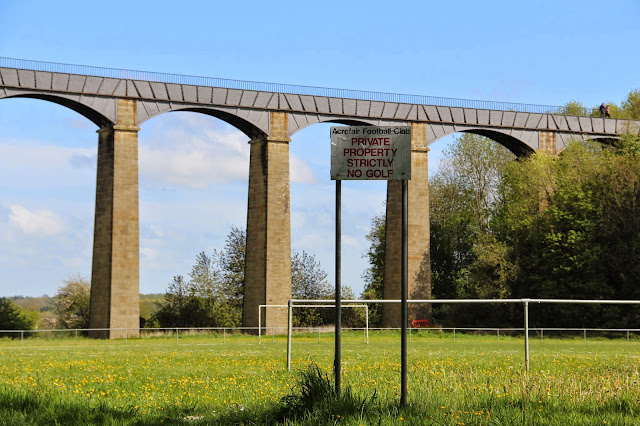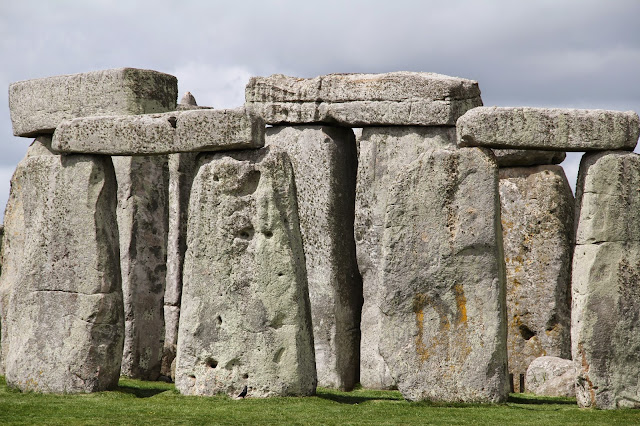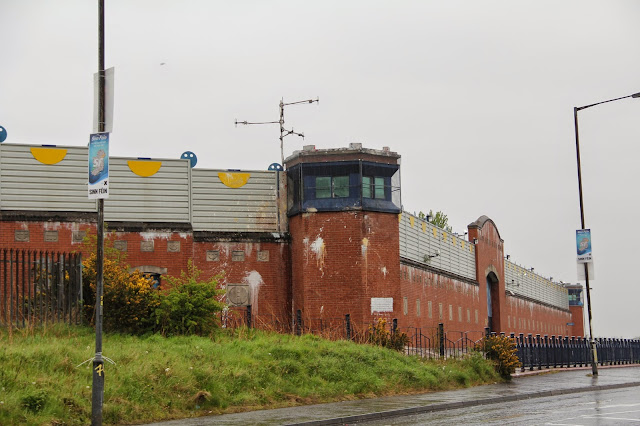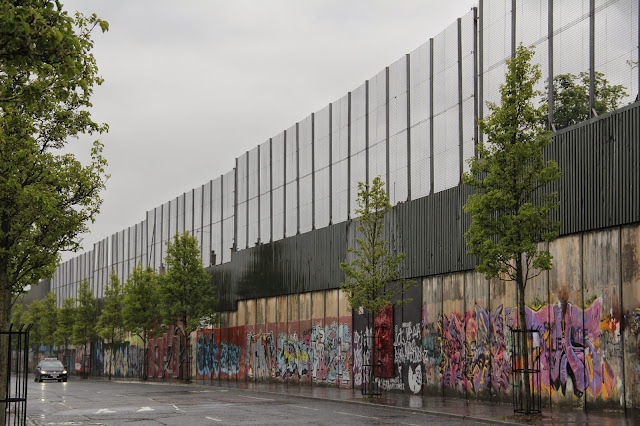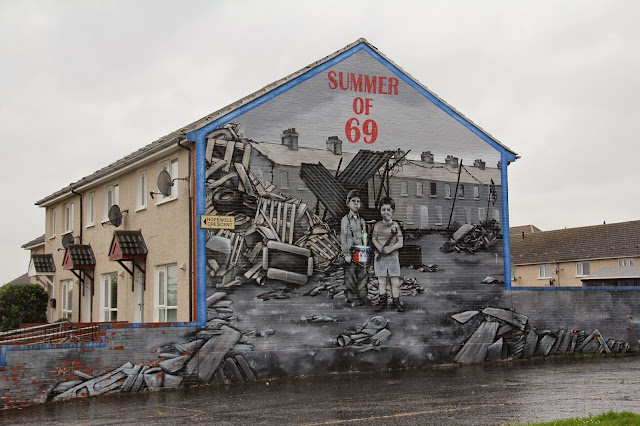On Monday morning May 11th we sailed on the 8:05 Irish Ferry from Dublin to Holyhead Wales.
Busy port of Dublin
Wish the MV Explorer had this policy. Instead its policy was that children shall not roam about unaccompanied on the ship. Unaccompanied on outer decks is much different than going from dining hall to library to cabin. This was a source of irritation for administrators (who always had to remind families with kids of the rules), parents (who felt it very hard to monitor the movements of multiple children) and children (who felt very restricted).
A sunny morning over Ireland.
The isle of Anglesey in northern Wales.
Snowdonia National Park. Would love to come back some day and explore. It is not your typical English countryside. One disadvantage of driving is that I can not take as many photos. Also problematic is that the narrow roads of Britain, often lined by restrictive fences and walls and without shoulders, makes it hard to pull over and take a quick photo.
Rural Wales.
What a language.
To break up our long day of driving (to Bath) we stopped at the Pontcysyllte Aqueduct near the Welsh-English Border (where there was a Welcome to England Sign). It was built 1795-1805 to help haul raw materials during the height of Britain's industrial revolution. This is a UNESCO World Heritage Site. We had the option to ride in one of the canal boats or walk across the 126 ft high aqueduct. We chose to walk in the wind.
No golf playing on the football pitch.
Next morning we stopped at Bath's Royal Crescent so Marie and Sarah could see where so many of their Victorian era novels are set. Joel is trying to act regal. We had hoped to visit the Roman Baths but traffic and lack of parking encouraged us to move on to Stonehenge and then an earlier arrival in London.
A sea of rape weed.
The new visitor center with adjacent parking that moves traffic further away from the monument.
We got to London in time for Joel and me to go and retrieve our five big bags from SafeStorage. We then decided to drive into London for the evening. We had no destination in mind, but a walk through Hyde Park seemed to be the best option. I grew up with a huge horse chestnut tree (with enough room for two tree houses) in our back yard. I have loved seeing so many horse chestnut trees in bloom throughout Britain and Ireland. They are everywhere (who rakes up the nuts and their prickly shells?)
Royal Albert Hall.
It wasn't much of a visit to London but back in 2009 we spent a delightful (and much colder) week here exploring http://beitemmett.blogspot.com/2010/01/london.html. We found a nice Asian noodle fusion restaurant to eat at for dinner and then drove back to the hotel. There Marie did an internet search to find out about London's congestion zone (she had seen the signs and worried, I thought we could just ignore them) which explained that if we paid 11 pounds on line for the privileged of having driven through part of London (cameras are watching) we would not be fined 85 pounds. We paid it. We then rearranged the contents of our bags to make them weight compatible for our flight home. As much as we have enjoyed exploring Britain and Ireland we were all happy that it was our last night packed into a small Holiday Inn Express (our home away from home for all but three or our 14 nights) family room (one double bed for two, one sofa bed for two--which was much more sleep-able when the mattress was placed on the floor, and Joel or Will taking turns on the entry area in front of the bathroom on a couch cushion). Next morning Sarah and I returned the rental car while Marie and the boys rode the hotel shuttle bus. We met up at terminal 2 for our 1:00 Icelandair flight to Rykjavik and then Seattle. We got to enjoy that cold and wind of Iceland as we walked across the tarmac to our plane. Next time I hope to enjoy more of Iceland by taking advantage of Iceland Air's free stopover policy. In Seattle Marie and the kids went out and met her sister Jeanne and four kids for a quick visit while I watched our bags. We arrived in Salt Lake City at 11:55 pm. Nephews Sam and Isaac were there to pick us up and drive us home. Neighbors, friends and my sister made sure that we were properly welcomed with donuts, homemade cinnamon rolls, breakfast foods, signs, chalk art and balloons. And thus ends our semester at Sea and our voyage, drive and flight around the world.
Busy port of Dublin
Wish the MV Explorer had this policy. Instead its policy was that children shall not roam about unaccompanied on the ship. Unaccompanied on outer decks is much different than going from dining hall to library to cabin. This was a source of irritation for administrators (who always had to remind families with kids of the rules), parents (who felt it very hard to monitor the movements of multiple children) and children (who felt very restricted).
A sunny morning over Ireland.
The isle of Anglesey in northern Wales.
Snowdonia National Park. Would love to come back some day and explore. It is not your typical English countryside. One disadvantage of driving is that I can not take as many photos. Also problematic is that the narrow roads of Britain, often lined by restrictive fences and walls and without shoulders, makes it hard to pull over and take a quick photo.
Rural Wales.
What a language.
To break up our long day of driving (to Bath) we stopped at the Pontcysyllte Aqueduct near the Welsh-English Border (where there was a Welcome to England Sign). It was built 1795-1805 to help haul raw materials during the height of Britain's industrial revolution. This is a UNESCO World Heritage Site. We had the option to ride in one of the canal boats or walk across the 126 ft high aqueduct. We chose to walk in the wind.
No golf playing on the football pitch.
Next morning we stopped at Bath's Royal Crescent so Marie and Sarah could see where so many of their Victorian era novels are set. Joel is trying to act regal. We had hoped to visit the Roman Baths but traffic and lack of parking encouraged us to move on to Stonehenge and then an earlier arrival in London.
A sea of rape weed.
We got to London in time for Joel and me to go and retrieve our five big bags from SafeStorage. We then decided to drive into London for the evening. We had no destination in mind, but a walk through Hyde Park seemed to be the best option. I grew up with a huge horse chestnut tree (with enough room for two tree houses) in our back yard. I have loved seeing so many horse chestnut trees in bloom throughout Britain and Ireland. They are everywhere (who rakes up the nuts and their prickly shells?)
It wasn't much of a visit to London but back in 2009 we spent a delightful (and much colder) week here exploring http://beitemmett.blogspot.com/2010/01/london.html. We found a nice Asian noodle fusion restaurant to eat at for dinner and then drove back to the hotel. There Marie did an internet search to find out about London's congestion zone (she had seen the signs and worried, I thought we could just ignore them) which explained that if we paid 11 pounds on line for the privileged of having driven through part of London (cameras are watching) we would not be fined 85 pounds. We paid it. We then rearranged the contents of our bags to make them weight compatible for our flight home. As much as we have enjoyed exploring Britain and Ireland we were all happy that it was our last night packed into a small Holiday Inn Express (our home away from home for all but three or our 14 nights) family room (one double bed for two, one sofa bed for two--which was much more sleep-able when the mattress was placed on the floor, and Joel or Will taking turns on the entry area in front of the bathroom on a couch cushion). Next morning Sarah and I returned the rental car while Marie and the boys rode the hotel shuttle bus. We met up at terminal 2 for our 1:00 Icelandair flight to Rykjavik and then Seattle. We got to enjoy that cold and wind of Iceland as we walked across the tarmac to our plane. Next time I hope to enjoy more of Iceland by taking advantage of Iceland Air's free stopover policy. In Seattle Marie and the kids went out and met her sister Jeanne and four kids for a quick visit while I watched our bags. We arrived in Salt Lake City at 11:55 pm. Nephews Sam and Isaac were there to pick us up and drive us home. Neighbors, friends and my sister made sure that we were properly welcomed with donuts, homemade cinnamon rolls, breakfast foods, signs, chalk art and balloons. And thus ends our semester at Sea and our voyage, drive and flight around the world.





















